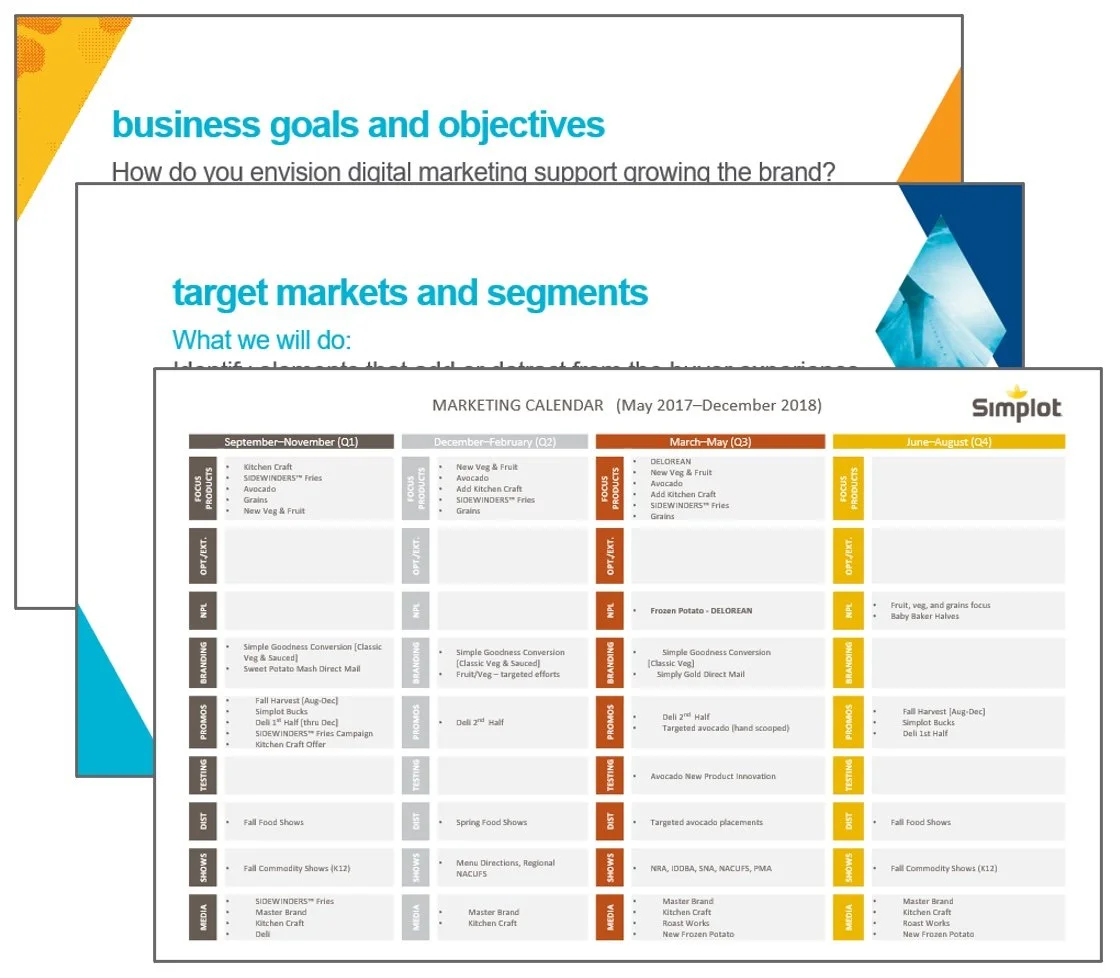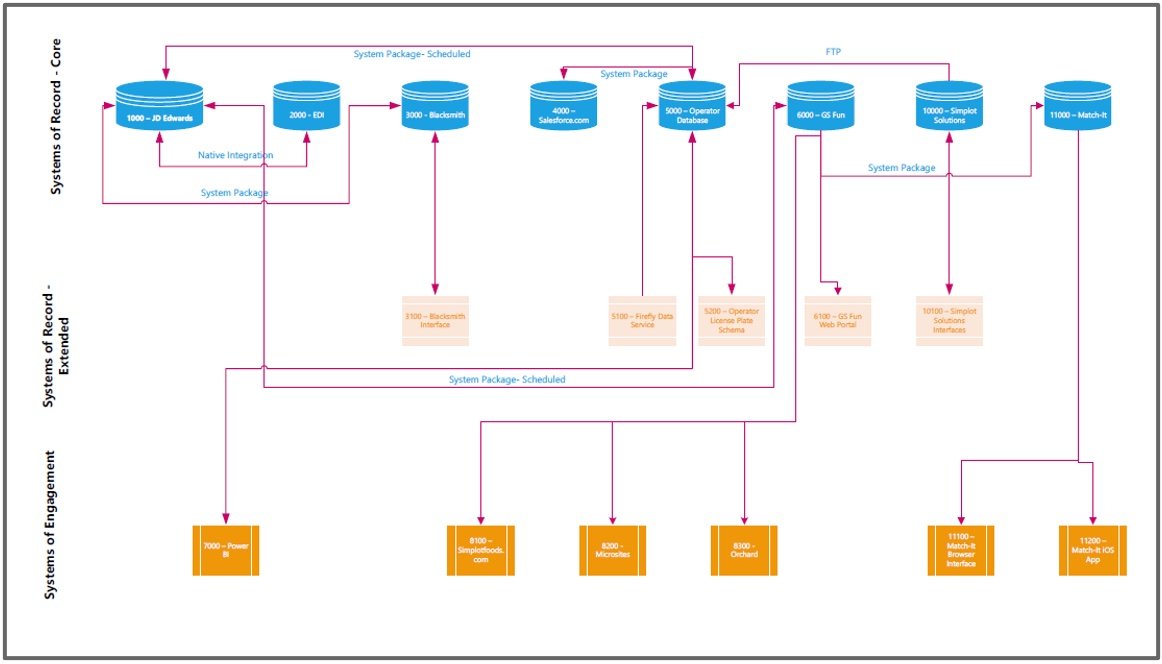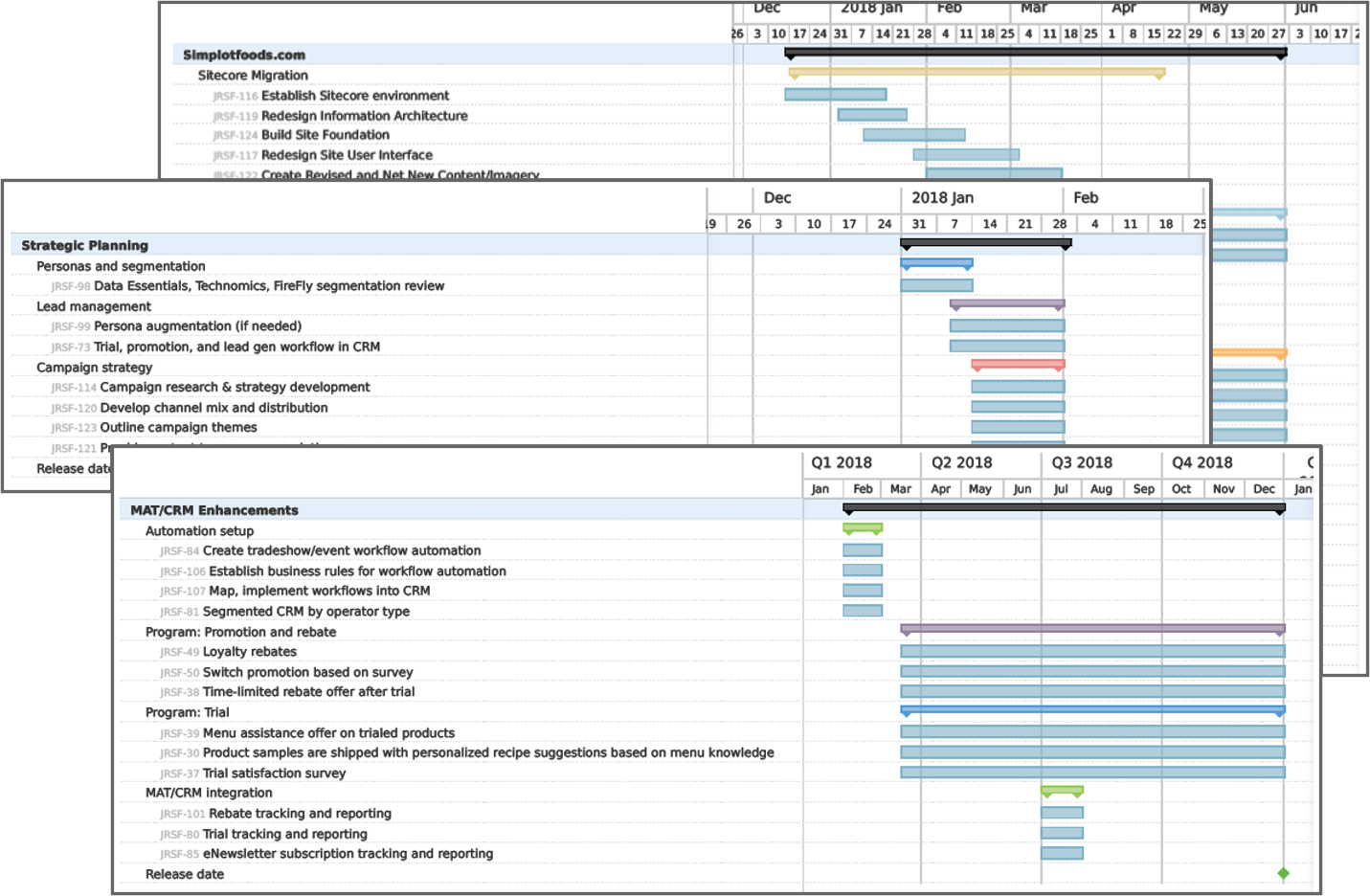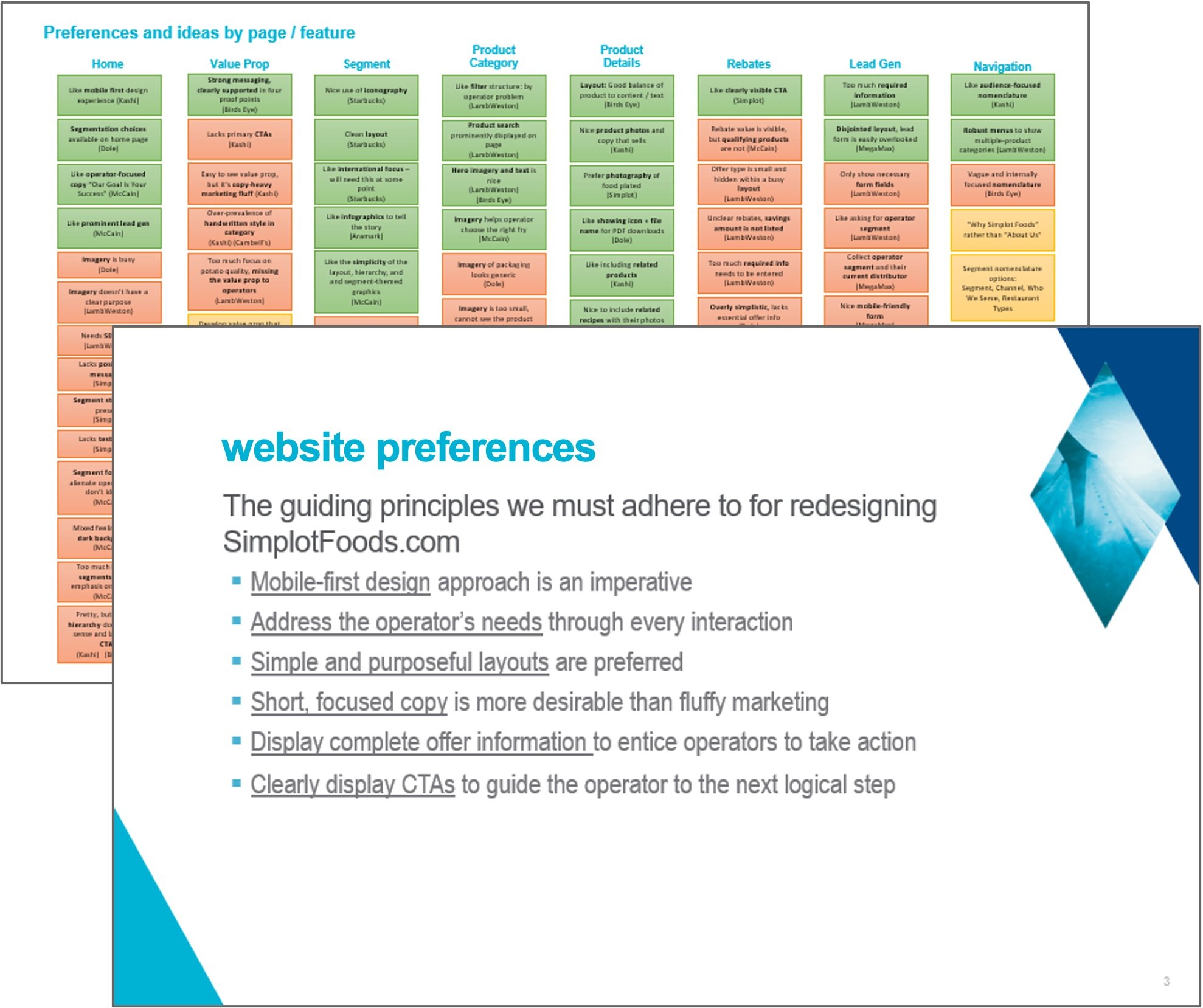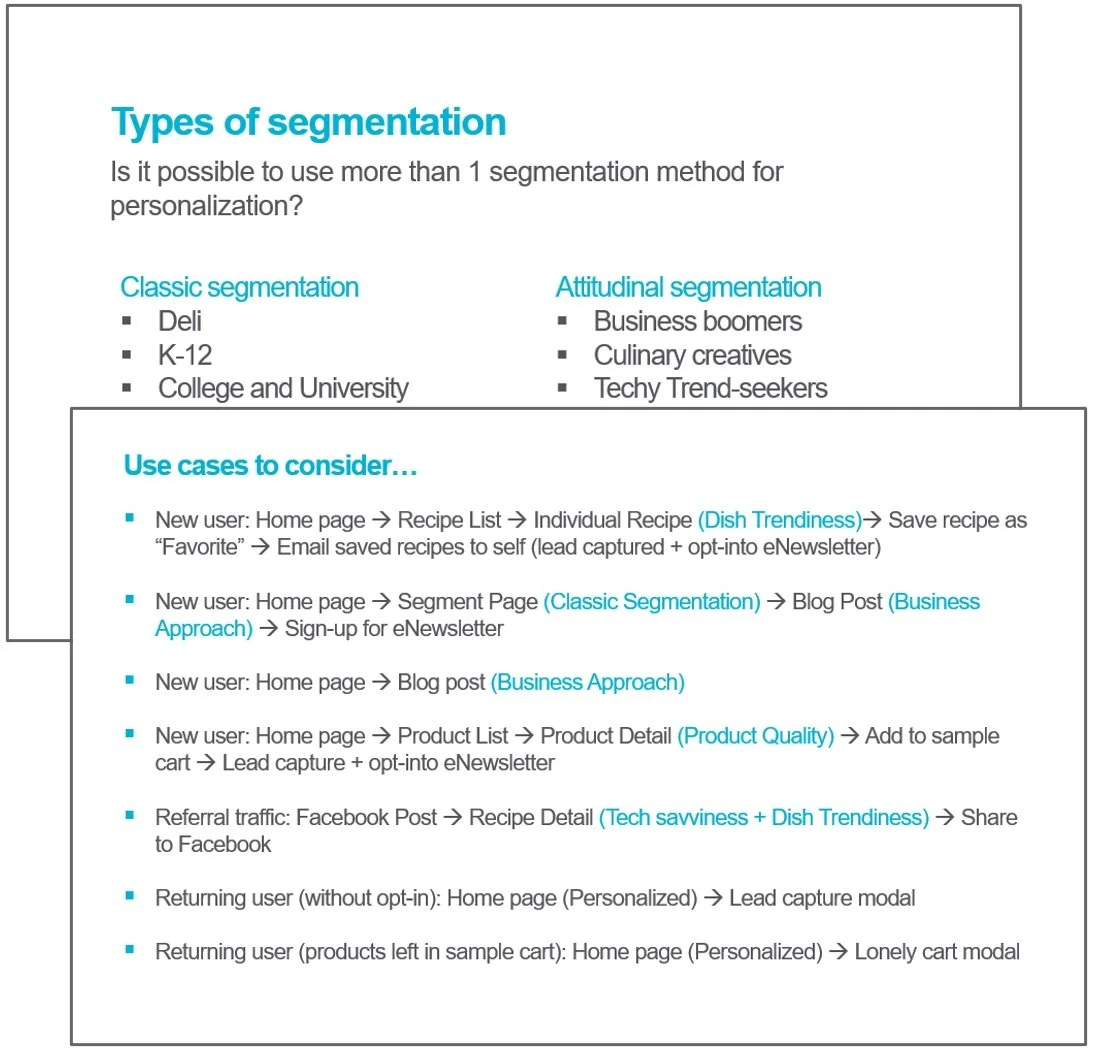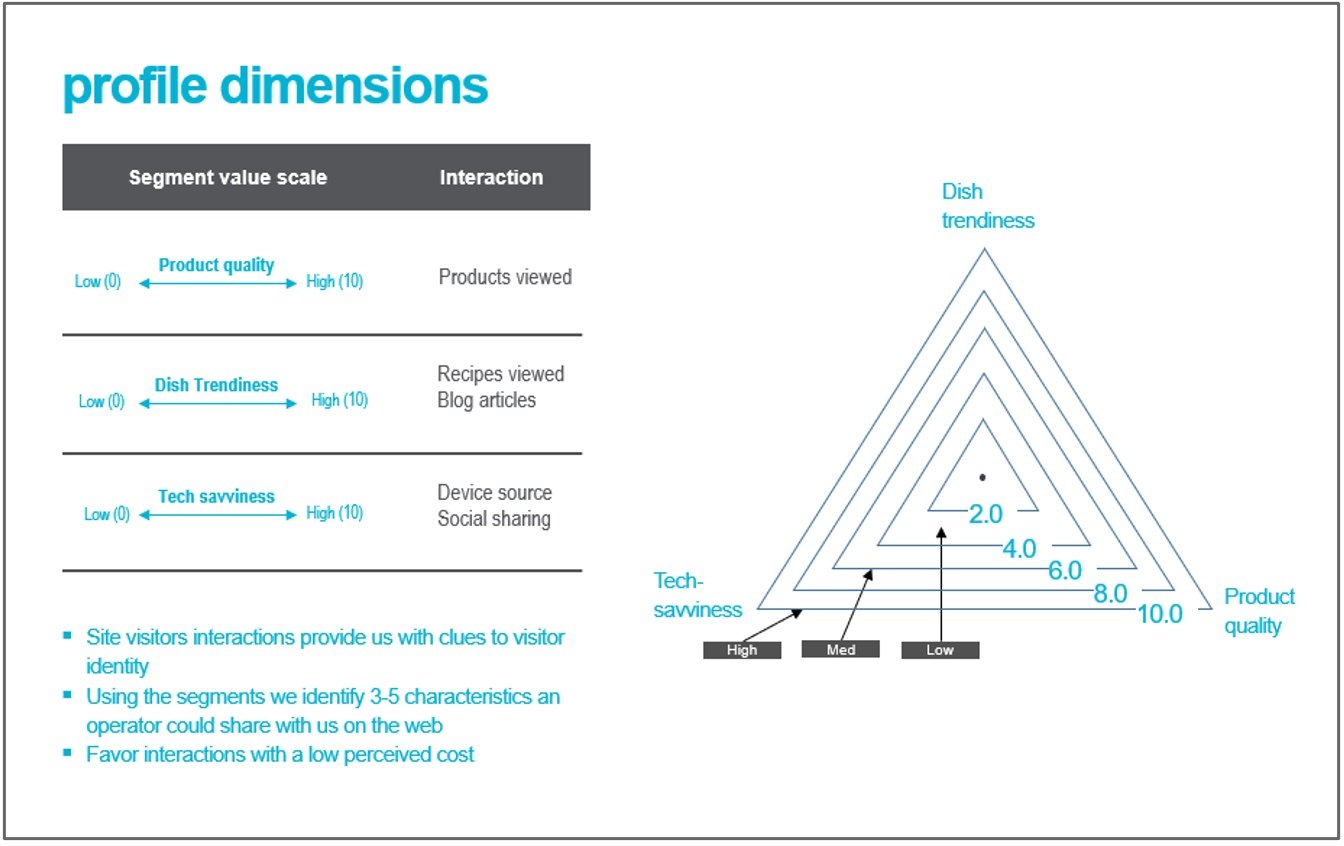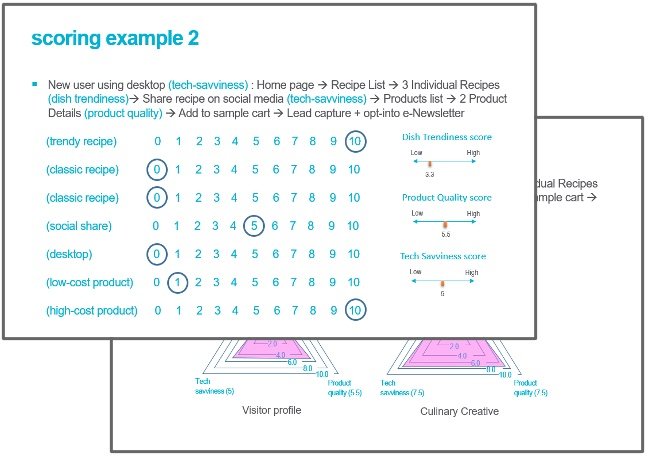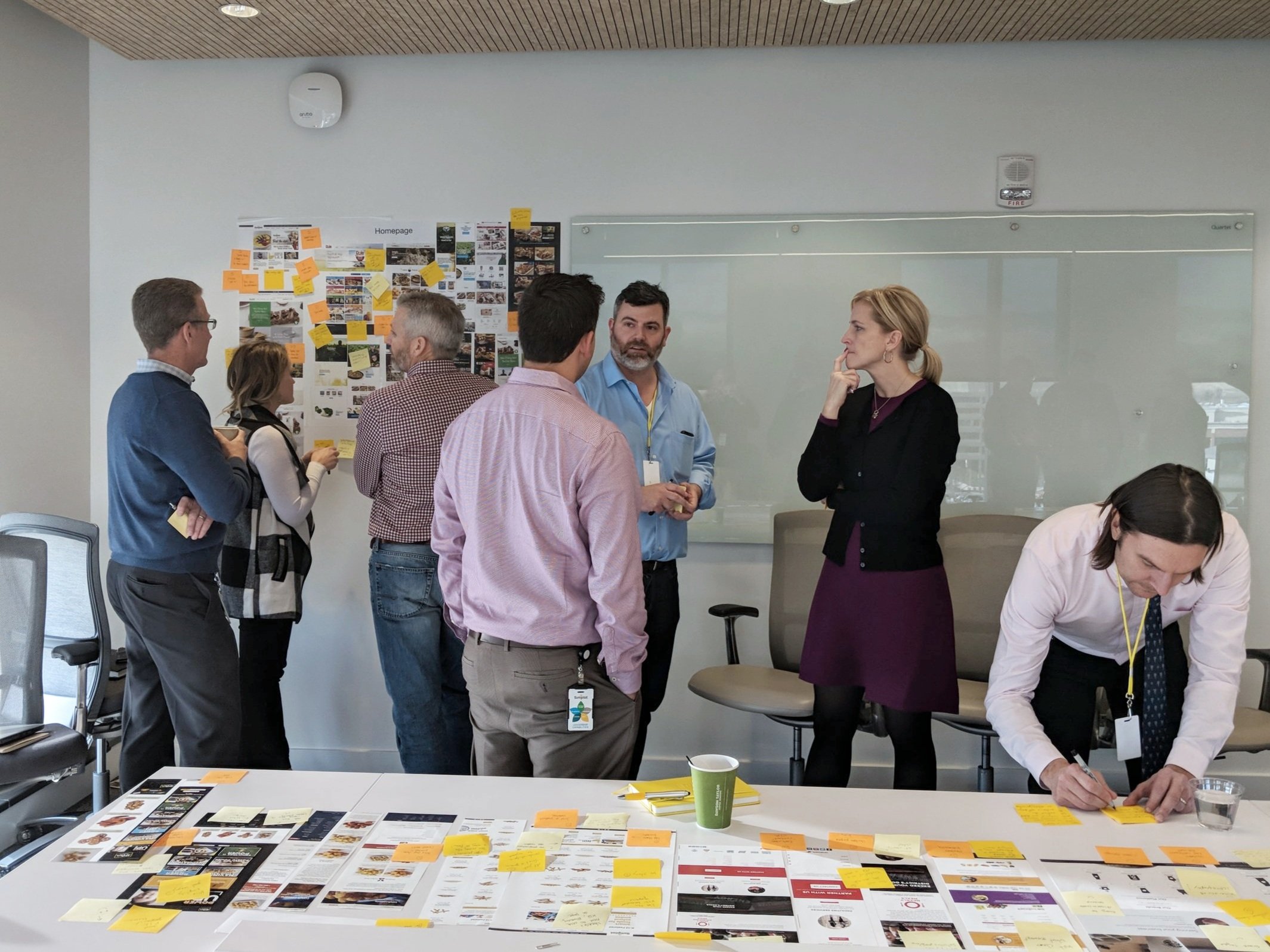
Simplot Foods – Customer Engagement Strategy
Digital Marketing and Sales Reimagined
—
Simplot Foods offers a portfolio of frozen foods sold through distributors to restaurants and food service operators. With operators increasingly conducting online products research and distributors controlling product sales, it became increasingly difficult for Simplot Foods to establish product preference to drive sales across their portfolio.
Simplot partnered with Garrigan Lyman Group (GLG) to rethink their digital marketing and sales enablement strategy and modernize their digital capabilities to maintain category dominance.
—
Outcomes
12-Month Transformation Roadmap - A cross-functional plan that directs the client’s collaborative effort to establish new marketing and sales digital capabilities and modernize their technology stack.
Website User Experience Strategy - Creation of content and personalization strategy for Simplot Foods marketing website tailored to a site visitors content consumption and interaction behaviors.
Agency of Record - The result of this work contributed to the agency achieving a long-term partnership as Simplot Foods digital marketing and design service provided.
—
My Contribution
Market and audience research
Designed and facilitated discovery workshops
Led customer experience ideation and prioritization sessions
Developed solution roadmap
Directed website content and personalization strategy

Project Approach
I crafted the overall project approach in partnership with GLG’s strategy director and technology director based on challenges identified during an initial discovery conversation with the client. We strategically selected and sequenced research, synthesis, ideation, workshops, and associated work products to drive decision-making and guide teams to achieve the project goals.
—
Digital Marketing Strategy
Current State Assessment
Inspiration Presentation & Discussion
Review Current Marketing & Sales Strategy
Technology Domain Map
Business Brief
Ideation & Prioritization
Experience Map
Ideation Session
Technology Fit/Gap Analysis
Idea Prioritization
Recommendations
Roadmap & Strategic Planning
—
Website Strategy
Define Requirements
Assumptions Brainstorm
Requirements Gathering
User Experience Strategy
Content Audit & Strategy
Personalization Strategy
Digital Marketing Strategy
Current State Assessment
This project engagement began by leading the client through an inspiration presentation to highlight market trends in comparable and analogous industries, and reviewing the client’s current approach to digital marketing and sales through the lens of understanding the customer experience Simplot Foods provided and the enabling technologies.
Marketing Research
Marketing Calendar
Marketing Technology Stack
—
Business Brief
Driving Insights
Digital Marketing Extends the Seller’s Reach
Sales reps are far outnumbered by operators and hand-off the final sale to distribution partners. Digital marketing offers the unique ability to sustain customer relationships without human intervention. To win, Simplot Foods needs to share customer engagement metrics with digital properties to help sales reps decide which operators are worthwhile to invest time forming personal relationships to influence their purchase behavior.
Attitudinal Segmentation
Simplot Foods recently completed a target audience definition project which recommended incorporating behavioral/attitudinal segmentation in addition to segmenting by business setting (e.g. supermarket deli, college, full-service restaurant, etc.). Simplot needed guidance how to incorporate this emerging strategy into their digital marketing execution.
Experience Map & Ideation
I synthesized findings from our discovery into an experience map to define the operators’ experience as they move from product research through purchase. The consolidated experience map served as a launch point for ideating new opportunities and tactics across the buyer’s journey.
Operator Experience Map
The experience map aligns Simplot’s marketing and sales interactions to operator needs, and identified key digital engagement channels Simplot could leverage to influence purchase behavior and drive sales through distributors.
Proposed Ideas Across the Operator Journey
I led a collaborative brainstorm session with GLG’s strategy and design team to produce new ideas for seasonal campaigns, thought leadership, operator digital tools, and digital relationship building experiences to empower operator success. Ideas were clustered to form 3 strategic focus areas:
Increase awareness and preference for the overall Simplot Foods brand
Market products across the portfolio
Build relationships to get closer to operators
Prioritization Matrix
Proposed ideas were scored according to their potential impact to sales and technical feasibility.
Technology Fit/Gap Analysis
GLG’s technology director assessed the overall sales and marketing technology stack providing recommendations which system components were best to maintain, modify, or replace to achieve the prioritized digital experience ideas.
Roadmap Recommendations
I created a unified 12-month roadmap in partnership with GLG’s technology director to drive collaboration across Simplot’s business groups.
Roadmap Walk-Through
The proposed roadmap accounted for dependencies of complex platform and data migrations while market and sales team work concurrently to redesign SimplotFoods.com and continue to launch seasonal campaigns.
Cross-initiative view
Activity-level view by initiative
SimplotFoods.com Experience Strategy
I designed and facilitated a workshop with Simplot’s cross-discipline team to gather assumptions, preferences, and functional requirements for the redesign of SimplotFoods.com.
Assumptions and Preferences Brainstorm
Cross-discipline teams reviewed a gallery of competitive and comparable websites. Thinking from the perspective of restaurant or food service operators, participants generated ideas on the desired aesthetic, messaging, and interactivity that should be available in the new website experience. A creative brief aligned teams around a common vision for the website user experience.
Paper Prototyping
Working in partnership with GLG’s UX designer, we created paper prototypes of the signature experiences in the website. Working in small teams, participants generated feedback to reveal new content and experiential ideas.
Initial Requirements Documentation
Feedback from the paper prototyping session was collected and organized into a light requirements document to gain alignment and sign-off on the desired functionality going foward.
User Experience Strategy
Working in partnership with GLG’s UX designer, we developed recommendations to leverage content, interactivity, and personalization to best engage operators based on their needs while positioning Simplot Foods brand as a trusted frozen foods partner.
Content Strategy
I educated Simplot Foods digital marketing team on content strategy practices and their application into the website experience. Introducing learning moments helped our client collaborate more strategically and gain a greater understanding of the impacts of their decisions.
Content Audit
I performed a content audit and provided recommendation for how to best leverage new and existing content in the website redesign. I utilized ScreamingFrog and Google Analytics to determine the value of existing content. Each page was reviewed, catalogued, and assessed to determine if the page content should be maintained, merged, edited, or removed during the redesign process.
Content Recommendations
GLG’s UX designer and I updated initial requirements document with content and functionality recommendations for the most visited website pages.
—
Personalization Strategy
I worked in partnership with GLG’s UX designer to implement a personalization strategy that leveraged the new attitudinal segmentation recommendations. Using Google Analytics, we performed a pathing analysis to identified common website visitation patterns originating from organic search or referral traffic. We identified signature visitation patters as users traversed product content, recipes pages, and engaged with lead-generation tools. We recommended implementing a scoring system to assign a numeric value to site visitations based on the user’s content consumption and engagement with led-gen activities. Scoring attributes assigned to users based on:
The level of dish trendiness when viewing recipe and blog pages
The quality and price of ingredient on product detail page
The level of engagement with lead-gen interaction: low-engagement for social sharing and saving recipes to high-engagement activities of opting into marketing emails or requesting rebates
Personalization Engine Use Cases
To communicated our personalization recommendation, we documented user cases how the scoring system worked during signature user visitation patterns. Specific content objects were incorporated into webpage designs, driven by this back-end personalization logic, would serve up personalized content relevant to their segment score.
Successes & Lessons Learned
Final website design
Start With a Hypothesis – I attribute the success of this engagement to proactively providing our client partners with a hypothesis expressed visually to facilitate conversations. This practice made it easier for our client to absorb the proposed strategy and allowed them to provide meaningful input and make decisions to move the project forward in a timely manner.
Just-In-Time Education – Sharing knowledge and best practices with clients early in the design process converted them into more strategic collaborators and broke down the barriers commonly associated between client and vendor relationships.
Gather Operators Perspectives – If I were to run this project again, I would advocate for conducting interviews with food service operators. While we used the sales team as a proxy restaurant operators, I believe direct research with the target audience could have surfaced new insights about their goals, needs, thoughts, feelings, actions, and pain-points, which could have further informed the website redesign.

